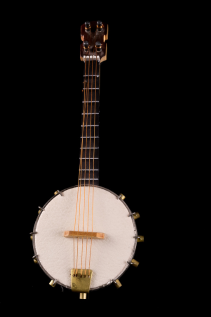
Today, country music stands as a popular and beloved genre by many in modern America. It stands out from other genres with its distinct, unique sound. However, amidst its popularity lies an often untold history.
Taking a look at early America nearly 450 years ago can shine light onto the key element of country music, the banjo, where countries’ roots begin. “It did not come from Africa as an unaltered tradition. Rather, the banjo’s creation was the result of a blending between West African and European forms,” says the Smithsonian. The banjo’s predecessor, the akonting, made its way to the Carribeans and later the Americas from Western Africa through the atlantic slave trade.
Being interpreted so many times without any reference to the original instrument, the banjo eventually grew apart from the akonting, but both kept a similar body and style of play. Ultimately, this process established the banjo as a staple into early and modern country music.
As country music progressed through the centuries, it underwent many changes. The banjo became a part of slave culture and music across the south, but it soon was appropriated and exploited to appeal to white audiences by mocking slave life through blackface performances.
“Those A&R men tapped into, amongst other factors, a pre civil war nostalgia” and created “A highly idealized southern pastoral scenario” as the face of country music, Queen Esther says. The primary audience of country music, being poor white people in rural areas, also brought up the coining of the term “hillbilly” music to refer to the genre, opposed to saying country.
With growing popularity amongst America, commercializing and profiting off the genre was next in line. More than often, these country and hillbilly sounds were based off of the existing melodies of black songwriters and old field songs.
To the popular mainstream figures in the growing genre, showing country music’s true beginnings with its many black influences was deemed unideal and unappealing to their audience, so they sought to erase any existing links to slavery from their “new” music and entirely overlook the past. This left many black writers and producers uncredited for any work that inspired and was used by white country figures.
Today, recognition is still growing for the black icons who played significant roles in the country, like DeFord Bailey, Charley Pride, and the Mississippi Sheiks, who were often marginalized in their field. Artists like Rhiannon Giddens and Dom Flemmon continue to reclaim and celebrate the country’s African roots, shining a light on the commonly unknown origins. “Let’s not make new mythology about Country music- let’s take this opportunity to get it right this time,” shares Rhiannon Giddens, further embracing where the genre came from.
Country music is deeply intertwined with black and African culture, as seen in the history of the instruments and melodies. While efforts to erase the rich history behind country music were extreme across America, today its origins still shine through within the retelling of past stories and the recreation of the unique sound by today’s artists.







